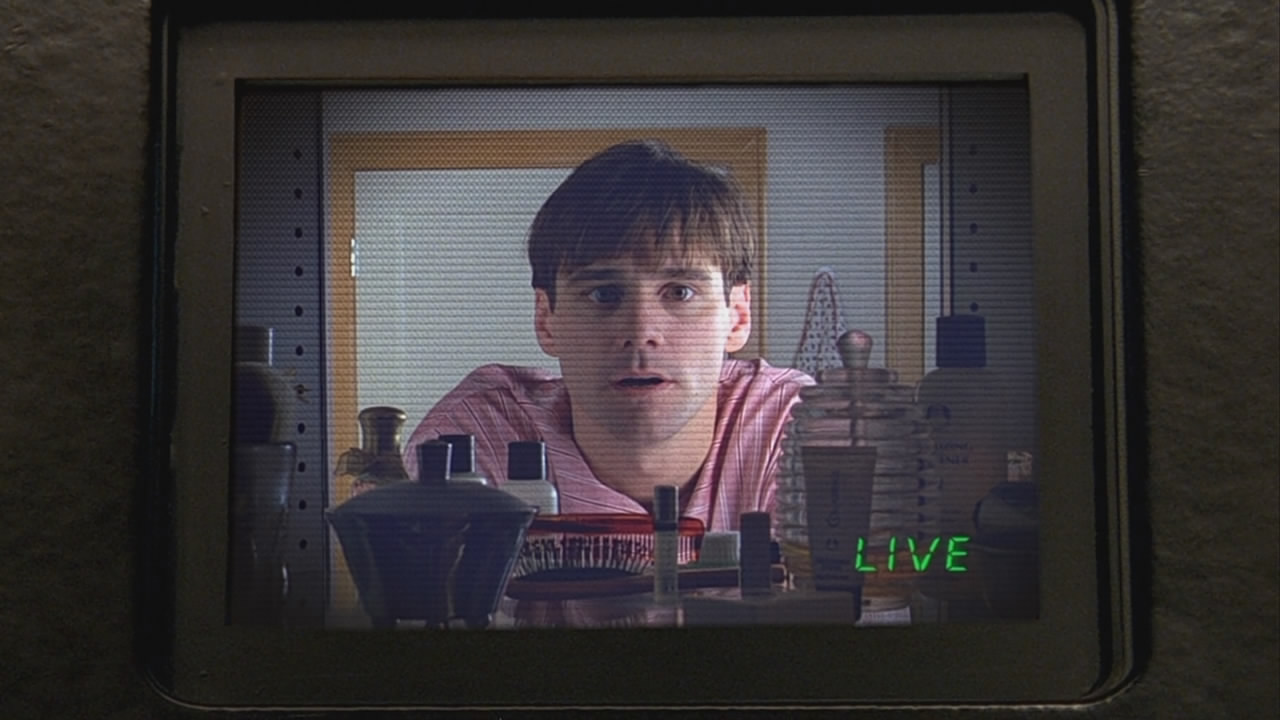
Television and cinema didn’t have a good relationship in the beginning. During the early ages of television, there weren’t any films shown on TV. In motion pictures, it was forbidden to show a television set.
The major studios thought of television as the end of cinema. To fight the danger of television, a great deal of technological development occurred in cinema during these years. Television had a small black and white square screen with bad image quality; cinema contrasted this with bringing color to film and inventing different aspect ratios like Cinemascope.
However, it was only when they realized they could sell movies to television and finance movies by doing so, that the two went together very well. Now, with the explosion of the Internet and online streaming, both of them found a new and very powerful enemy.
10. Being There (Hal Ashby, 1979)
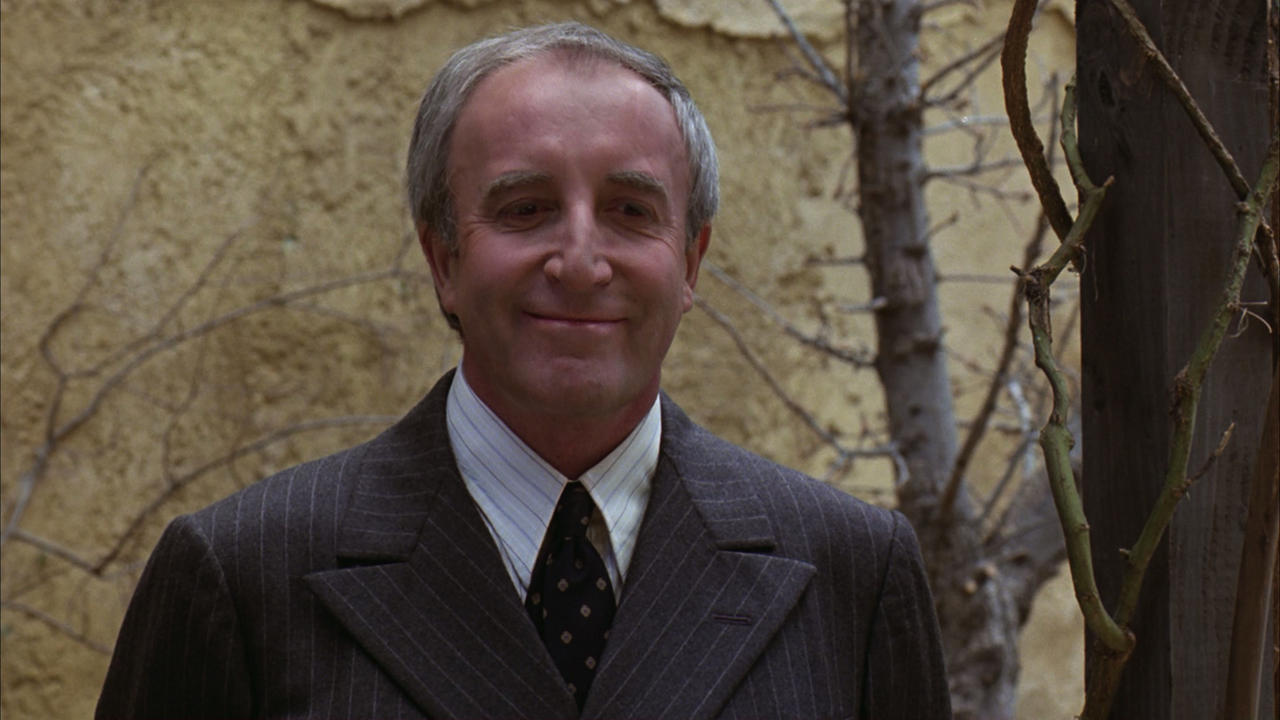
Were it not for Peter Sellers, this Jerzy Kosinski adaptation would have never been made. Sellers called Kosinski immediately after reading the book and affirmed him that the character Chance was Peter Sellers.
Seven years after the book’s release, Sellers chances came to fruition, as his Pink Panther sequels proved enough of a success to convince a major studio to produce the film. The naïve Chance (Peter Sellers) spent his entire life working as a gardener in the house of a wealthy man residing in Washington, D.C. All of his knowledge comes from his favorite pastime experience, television.
After the death of his employer, Chance is forced to move out. Taking only his suitcase and his remote control, Chance makes his first encounter with the outside world. While watching himself on a TV outside an electronics store, he gets hit by the car of Eve (Shirley MacLaine).
The poignant misunderstanding ensues as she takes him home to recover and mishears “Chance, the gardener” as Chauncey Gardiner. When Ben Rand (Melvyn Douglas), the wealthy and influential businessman and husband of Eve, meets Chance, he as well mistakes his simple mind as wisdom. Soon, Chance finds himself as a potential presidential candidate.
On the outside of a light-hearted black comedy, “Being There” satirizes politics, fame, television, pretentiousness and media obsession. The Oscar-winning editor turned director Hal Ashby was a quirky filmmaker before being a quirky filmmaker was cool. A collaboration of Ashby and Peter Sellers, the man of 1001 characters, would certainty be much anticipated.
It’s a pity their collaboration ended on bad terms, as Sellers felt Ashby cost him an Oscar for Best Actor by putting the outtakes of his mistakes during the credits of the film. At least it earned him a Golden Globe. Without wanting to spoil anything, the ambiguous ending comes across as if it’s taken straight from another film, or dare I say, from another very famous book.
9. Quiz Show (Robert Redford, 1994)

Robert Redford, when given a good screenplay, can certainly direct, and in the case of “Quiz Show”, the engaging source material is based on true events that occurred during the 1958 scandal of the rigged television quiz show “Twenty One”. NBC’s “Twenty One” is the popular intellectual game show in 1958.
The show’s record-winning contestant, Jewish man Herb Stempel (John Turturro), seems undefeatable. He wins week after week. However, when his approval ratings start to drop, both the network, as well as the corporate sponsor of the program, wants a replacement. When the handsome Charles Van Doren (Ralph Fiennes),
Columbia University instructor and son of a prominent family auditions for the show, producers Dan Enright (David Paymer) and Albert Freedman (Hank Azaria) know they have their hit contestant. After Van Doren refuses to take the answers to the quiz from the producers, they have to pay off Stempel to lose deliberately.
Stempel now threatens to sue NBC after he lost the prize money to an unscrupulous bookie. Meanwhile, a young Congressional lawyer, Richard Goodwin (Rob Morrow), travels to New York to investigate rumors of rigged quiz shows.
Visiting a number of contestants, including Stempel and Van Doren, he begins to suspect that “Twenty One” is indeed a fixed operation. Depicted as largely historically accurate, “Quiz Show” is both entertaining and thought provoking, while being courageous and not shy of great performances.
8. The Insider (Michael Mann, 1999)
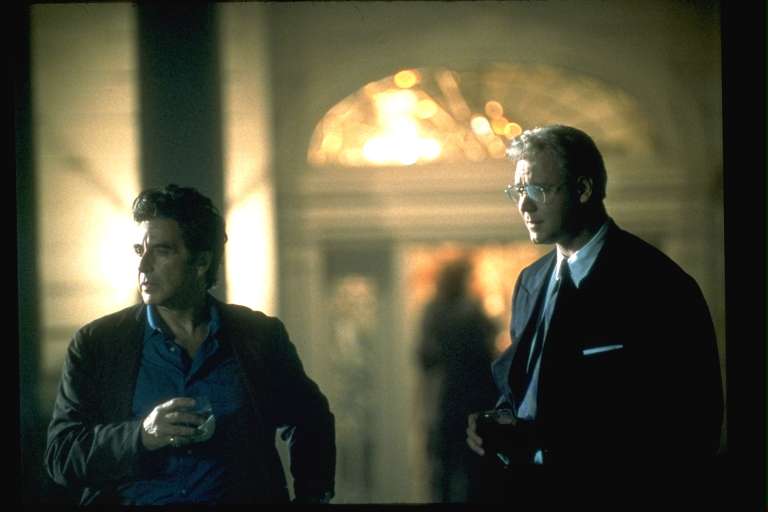
The script of “The Insider” was based on a Vanity Fair article from 1996 titled “The Man Who Knew Too Much”. The real life Jeffrey Wigand was a key witness in lawsuits against the tobacco industry filed by Mississippi and 49 other states, which were eventually settled for $246 billion.
Lowell Bergman (Al Pacino) is the producer of the CBS hit news show with Mike Wallace (Christopher Plummer), “60 Minutes”. Their latest uncovering involves the Brown & Williamson Tobacco Company, who recently fired one of their top chemists Dr. Jeffrey Wigand (Russell Crowe).
Wigand is reluctant to agree on the interview, but he is persuaded to give one by Bergman because he has sign a confidentiality agreement with B&W. Because of pressure and bullying from B&W toward Wigand to sign more confidentiality agreements, he decides to fight back and do everything in his power to get the truth out. But things get only worse as he is facing legal actions and character assassination, and his wife also leaves him. “The Insider” is a high-tension suspenseful biopic thriller.
The constant camera movement, digital format and ominous sound design, which brings the atmosphere to the foreground, adds to the hectic aura of the screenplay.
7. Videodrome (David Cronenberg, 1983)
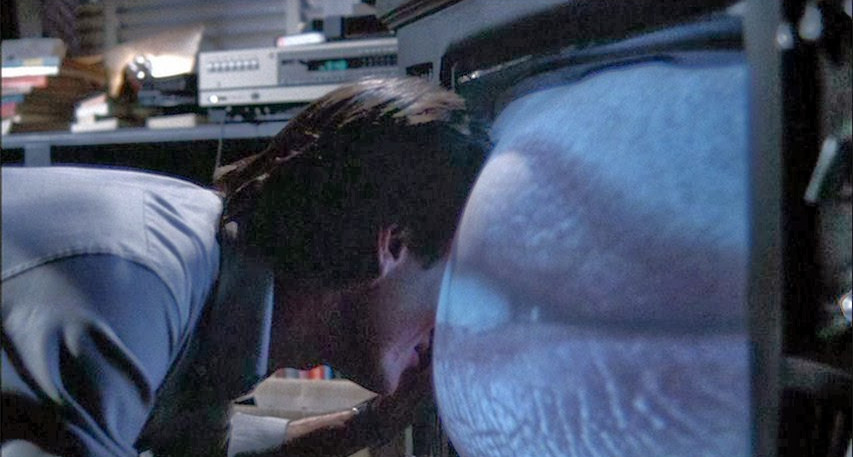
Before pulling the extremely rare feat of directing a remake better than the original with 1986’s “The Fly” three years earlier, David Cronenberg directed his first original classic masterpiece with “Videodrome”. Max Renn (James Woods) is the president of a Toronto television station whose programming mostly consists of soft-core pornography and gratuitous violence. Bored with his current programs, Max urges Harlan (Peter Dvorsky) to intercept and record shows broadcasted around the world.
Harlan finds a plotless television show broadcast from Malaysia, which depicts the brutal torture and eventual murder of anonymous victims, called Videodrome. Convinced this is a staged snuff film and the future of television, Max begins unlicensed broadcasting of the show. While Max searches to discover the show’s producer and place of origin, he finds himself halted by a mysterious complot that begins with the disappearance of his new lover, the sadomasochistic Nicki (Debbie Harry).
“Videodrome” is often credited with heralding the Internet, as it is a form of interactional television. It is especially relatable to the ideology of the forbidden that embodies the Darknet. Cronenberg would refute those claims, as he credits his inspiration with streaming from the limitations of television and the idea of the fusion of technology and the body, but he agrees that “Videodrome” is an anticipation of something of that form.
6. Good Night, and Good Luck (George Clooney, 2005)
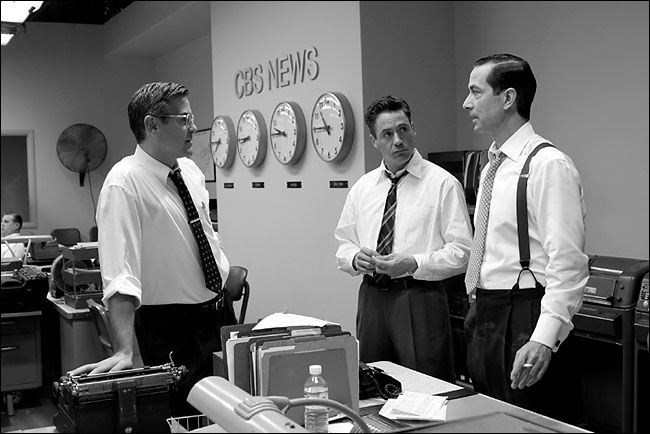
Possessing a major in journalism and being the son of a TV journalist, actor-screenwriter-director George Clooney’s “Good Night, and Good Luck” feels like a personal jubilation.
With six Oscar nominations, including Best Picture, Director, Screenplay and Lead Actor, it also makes it his most successful work. Set in 1953, broadcast journalist Edward R. Murrow (David Strathairn), his producer Fred Friendly (George Clooney), and their loyal staff oppose all corporate interest pressure and start exposing on their TV show Wisconsin senator Joseph McCarthy and his witch hunt on everybody whom he berates as communist.
Their relentless deed won’t conclude without consequences. The strongest aspects of the film are the astounding performances; everybody from David Strathairn to Clooney to Robert Downey Jr. to Patricia Clarkson to Jeff Daniels are absolutely flawless. They carry this film.
The smoky monochromatic cinematography is not only an aesthetic choice reflecting the time period, but is also an homage to Orson Welles’ “Citizen Kane”.
Sadly enough, this could have been a great film if not for the slim screenplay, barely making it to 93 minutes while still including a lot of stock footage and musical breaks that don’t tie into the plot. Some suspense would also have been nice.
Nonetheless, it’s worth a watch for the historic depiction of Murrow and splendid performances.